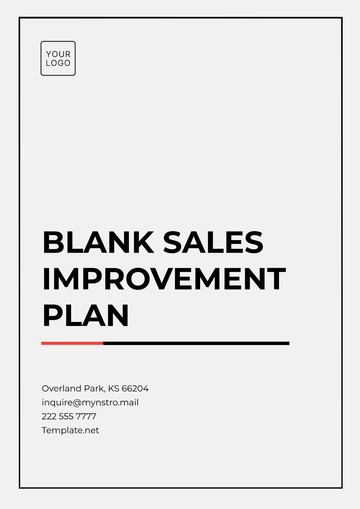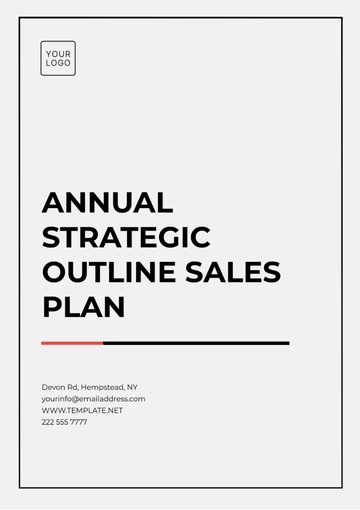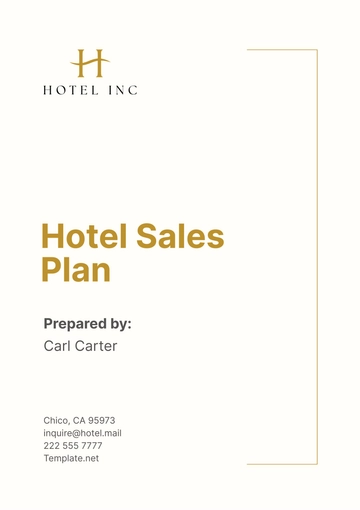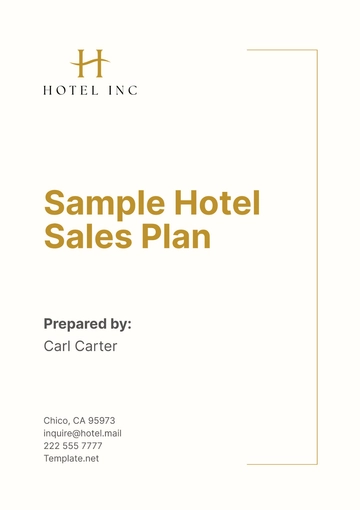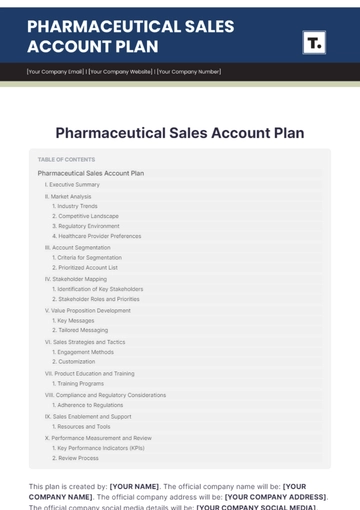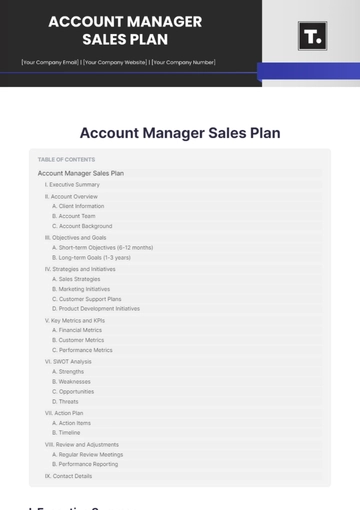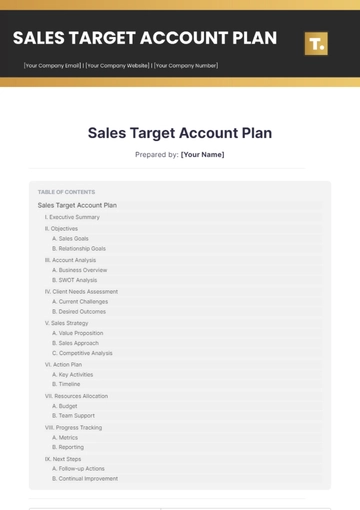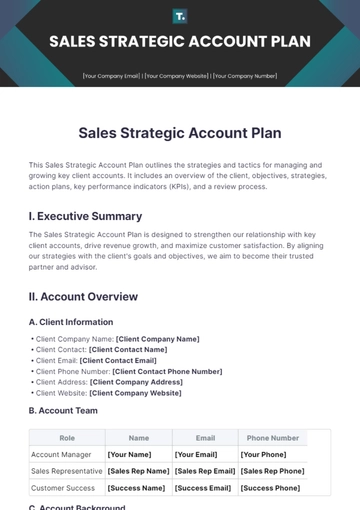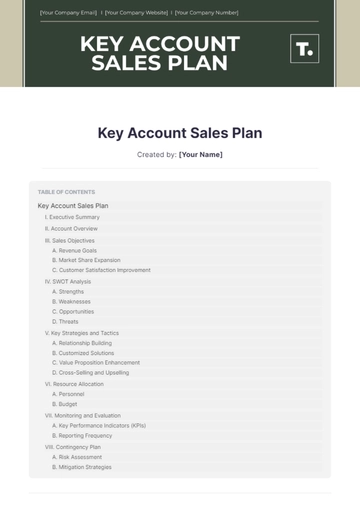Free Aesthetic Clothing Store Inventory Plan

Prepared by: [Your Name]
Date: [Date]
I. Executive Summary
This Aesthetic Clothing Store Inventory Plan outlines a forward-thinking strategic approach to managing and organizing inventory for a clothing store specializing in aesthetic, trend-driven fashion. Our goal is to maintain an appealing product mix, optimize inventory turnover, and minimize excess stock while embracing sustainable practices. This document covers a detailed market analysis, inventory objectives, product categories, stock levels, reordering schedules, visual merchandising strategies, sales forecasting techniques, and performance metrics. These elements will guide our inventory management practices into the future.
II. Market Analysis
Understanding the market landscape is crucial for our inventory management. The target market for aesthetic clothing includes fashion-forward individuals, primarily aged 18-35, who are influenced by current trends, social media, and the growing demand for sustainable fashion.
A. Target Demographics
Age: 18-35 years
Gender: Primarily female, with a growing interest in male and non-binary segments
Income Level: Middle to high-income
Interests: Fashion, social media, influencers, and sustainable living
B. Market Trends
Increased demand for sustainable and ethical fashion, driven by consumer awareness and climate change concerns.
Popularity of vintage and retro styles, often sourced from thrift shops or upcycled materials.
Influence of social media and influencers, shaping trends in real-time and creating a need for rapid inventory adjustments.
Seasonal fashion trends are increasingly dynamic, with mini-collections released quarterly rather than traditionally seasonal.
III. Inventory Objectives
Our primary inventory objectives are designed to ensure our aesthetic clothing store meets the evolving demands of our customers while maintaining profitability and sustainability.
Maintain a Diverse Product Mix: Curate collections that resonate with our brand ethos and target demographics.
Optimize Inventory Turnover: Strive for an inventory turnover ratio of at least 4-6 times per year.
Minimize Excess Stock: Employ data-driven strategies to predict trends and avoid deadstock.
Enhance Customer Satisfaction: Ensure trendy, sustainable products are readily available to meet customer expectations.
Streamline Inventory Costs: Focus on improving profitability through effective inventory management practices.
IV. Product Categories
Our inventory will be organized into the following product categories to ensure a diverse and appealing product mix, with a focus on sustainability:
Apparel
Tops: Eco-friendly fabrics, oversized fits, crop tops
Bottoms: High-waisted jeans, sustainable leggings, wide-leg trousers
Dresses: Midi dresses, vintage-inspired styles, casual summer dresses
Outerwear: Sustainable jackets, denim coats, trendy cardigans
Accessories
Bags: Recycled material handbags, fanny packs, tote bags
Hats: Bucket hats, beanies, and sun hats made from sustainable materials
Jewelry: Eco-friendly pieces, vintage finds, handmade items
Footwear
Sneakers: Sustainable brands, unique collaborations, eco-conscious designs
Boots: Vintage styles, combat boots, ethically sourced materials
V. Stock Levels and Reordering
A. Stock Levels
Establishing optimal stock levels for each product category to avoid stockouts and overstocking:
Category | Minimum Stock Level | Maximum Stock Level |
|---|---|---|
Tops | 150 units | 600 units |
Bottoms | 100 units | 450 units |
Dresses | 75 units | 300 units |
Outerwear | 50 units | 200 units |
B. Reordering Schedules
Implementing a reordering schedule based on sales data, seasonality, and predictive analytics:
Review sales data weekly, focusing on high-demand items.
Reorder when stock levels reach the minimum threshold, utilizing automated inventory management systems.
Increase orders before peak seasons (e.g., holidays, festival seasons) and adjust based on previous sales patterns.
VI. Visual Merchandising
Employing innovative visual merchandising strategies to enhance the attractiveness of the store and the products:
Create Engaging Displays: Highlight new arrivals and bestsellers through eye-catching arrangements that reflect current trends.
Regularly Rotate Displays: Keep the store environment fresh and dynamic by updating displays monthly.
Showcase Complete Outfits: Use mannequins to feature styled looks that encourage cross-selling.
Utilize Technology: Implement augmented reality (AR) elements to allow customers to virtually try on clothing.
VII. Sales Forecasting
Accurately forecasting sales to align inventory levels with expected demand using advanced techniques:
Analyze Historical Sales Data: Use machine learning algorithms to identify trends and patterns in consumer behavior.
Consider Market Trends: Factor in shifts towards sustainability and consumer preferences in real-time.
Employ Predictive Tools: Use software to model different sales scenarios based on market fluctuations and promotions.
Adjust Forecasts: Continuously refine predictions based on ongoing promotional events and marketing campaigns.
VIII. Performance Metrics
Tracking performance metrics to evaluate the effectiveness of our inventory management strategy:
A. Key Performance Indicators (KPIs)
Inventory Turnover Rate: Target 4-6 times per year to ensure efficient stock movement.
Sell-Through Rate: Aim for a sell-through rate of over 75% for new arrivals within the first month.
Gross Margin Return on Investment (GMROI): Monitor to achieve a GMROI of at least 300%.
Days Sales of Inventory (DSI): Maintain DSI below 30 days to enhance cash flow.
B. Regular Reviews
Conduct monthly inventory audits to ensure accuracy and identify slow-moving items.
Perform quarterly performance reviews to evaluate inventory strategy effectiveness.
Engage in annual strategic assessments to refine inventory management practices and align with changing market conditions.
- 100% Customizable, free editor
- Access 1 Million+ Templates, photo’s & graphics
- Download or share as a template
- Click and replace photos, graphics, text, backgrounds
- Resize, crop, AI write & more
- Access advanced editor
Organize your inventory efficiently with the Aesthetic Clothing Store Inventory Plan Template from Template.net. This editable and customizable template is designed for aesthetic clothing stores, helping you manage inventory with ease. Modify it to fit your specific needs, and make seamless updates, fully editable in our Ai Editor Tool, for a streamlined inventory process.
You may also like
- Finance Plan
- Construction Plan
- Sales Plan
- Development Plan
- Career Plan
- Budget Plan
- HR Plan
- Education Plan
- Transition Plan
- Work Plan
- Training Plan
- Communication Plan
- Operation Plan
- Health And Safety Plan
- Strategy Plan
- Professional Development Plan
- Advertising Plan
- Risk Management Plan
- Restaurant Plan
- School Plan
- Nursing Home Patient Care Plan
- Nursing Care Plan
- Plan Event
- Startup Plan
- Social Media Plan
- Staffing Plan
- Annual Plan
- Content Plan
- Payment Plan
- Implementation Plan
- Hotel Plan
- Workout Plan
- Accounting Plan
- Campaign Plan
- Essay Plan
- 30 60 90 Day Plan
- Research Plan
- Recruitment Plan
- 90 Day Plan
- Quarterly Plan
- Emergency Plan
- 5 Year Plan
- Gym Plan
- Personal Plan
- IT and Software Plan
- Treatment Plan
- Real Estate Plan
- Law Firm Plan
- Healthcare Plan
- Improvement Plan
- Media Plan
- 5 Year Business Plan
- Learning Plan
- Marketing Campaign Plan
- Travel Agency Plan
- Cleaning Services Plan
- Interior Design Plan
- Performance Plan
- PR Plan
- Birth Plan
- Life Plan
- SEO Plan
- Disaster Recovery Plan
- Continuity Plan
- Launch Plan
- Legal Plan
- Behavior Plan
- Performance Improvement Plan
- Salon Plan
- Security Plan
- Security Management Plan
- Employee Development Plan
- Quality Plan
- Service Improvement Plan
- Growth Plan
- Incident Response Plan
- Basketball Plan
- Emergency Action Plan
- Product Launch Plan
- Spa Plan
- Employee Training Plan
- Data Analysis Plan
- Employee Action Plan
- Territory Plan
- Audit Plan
- Classroom Plan
- Activity Plan
- Parenting Plan
- Care Plan
- Project Execution Plan
- Exercise Plan
- Internship Plan
- Software Development Plan
- Continuous Improvement Plan
- Leave Plan
- 90 Day Sales Plan
- Advertising Agency Plan
- Employee Transition Plan
- Smart Action Plan
- Workplace Safety Plan
- Behavior Change Plan
- Contingency Plan
- Continuity of Operations Plan
- Health Plan
- Quality Control Plan
- Self Plan
- Sports Development Plan
- Change Management Plan
- Ecommerce Plan
- Personal Financial Plan
- Process Improvement Plan
- 30-60-90 Day Sales Plan
- Crisis Management Plan
- Engagement Plan
- Execution Plan
- Pandemic Plan
- Quality Assurance Plan
- Service Continuity Plan
- Agile Project Plan
- Fundraising Plan
- Job Transition Plan
- Asset Maintenance Plan
- Maintenance Plan
- Software Test Plan
- Staff Training and Development Plan
- 3 Year Plan
- Brand Activation Plan
- Release Plan
- Resource Plan
- Risk Mitigation Plan
- Teacher Plan
- 30 60 90 Day Plan for New Manager
- Food Safety Plan
- Food Truck Plan
- Hiring Plan
- Quality Management Plan
- Wellness Plan
- Behavior Intervention Plan
- Bonus Plan
- Investment Plan
- Maternity Leave Plan
- Pandemic Response Plan
- Succession Planning
- Coaching Plan
- Configuration Management Plan
- Remote Work Plan
- Self Care Plan
- Teaching Plan
- 100-Day Plan
- HACCP Plan
- Student Plan
- Sustainability Plan
- 30 60 90 Day Plan for Interview
- Access Plan
- Site Specific Safety Plan


